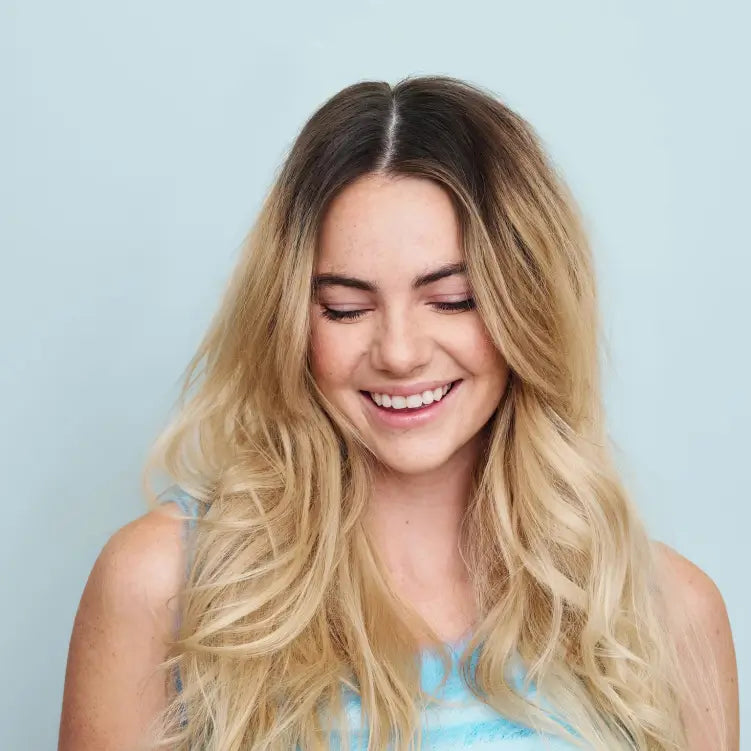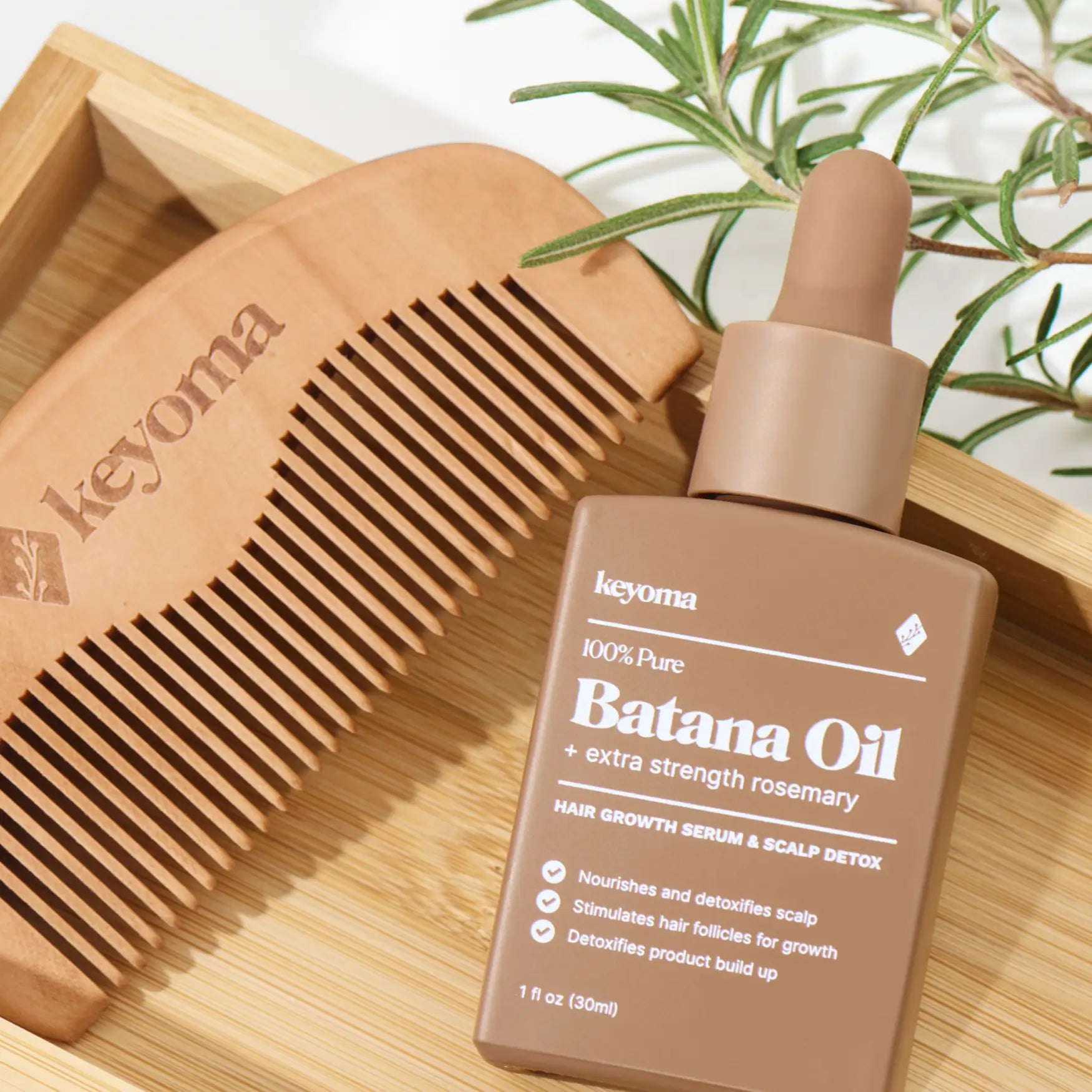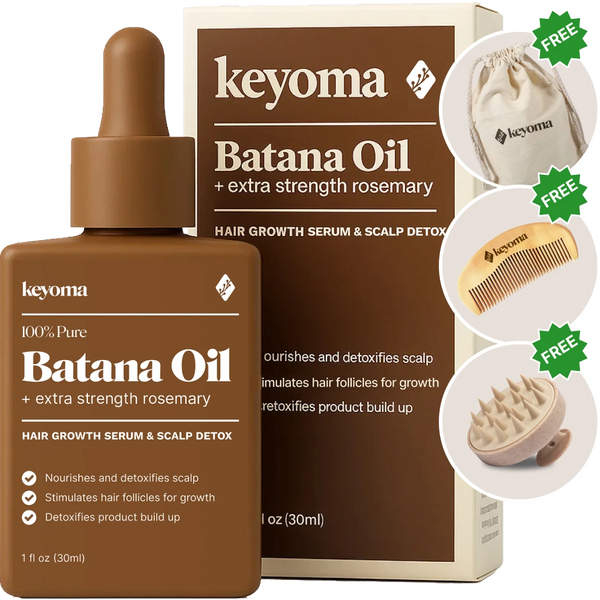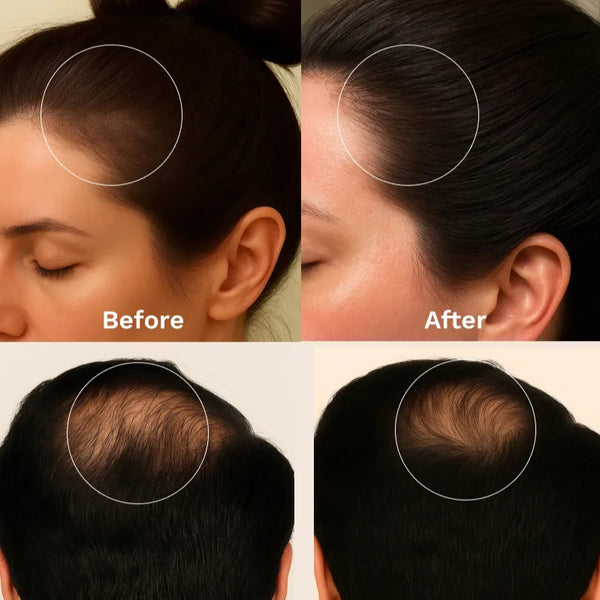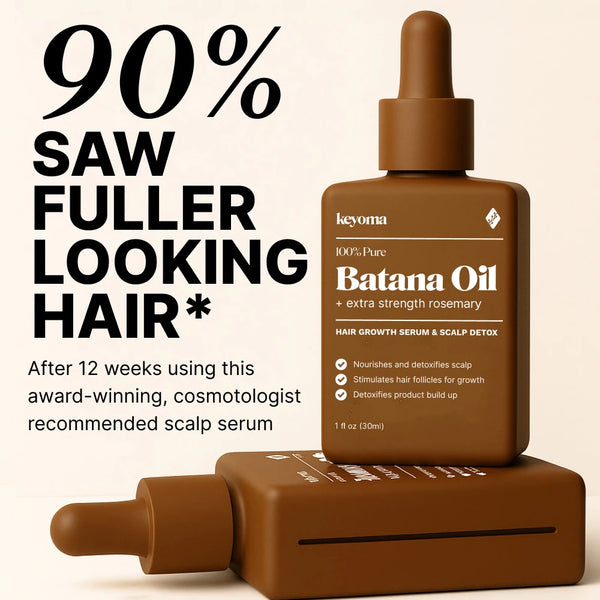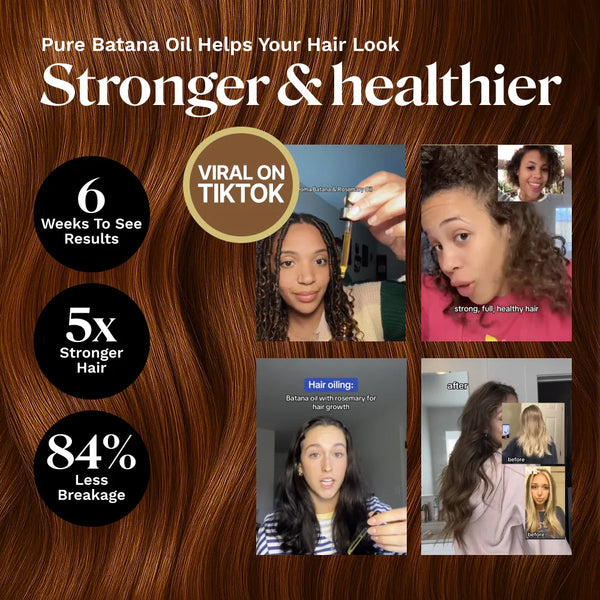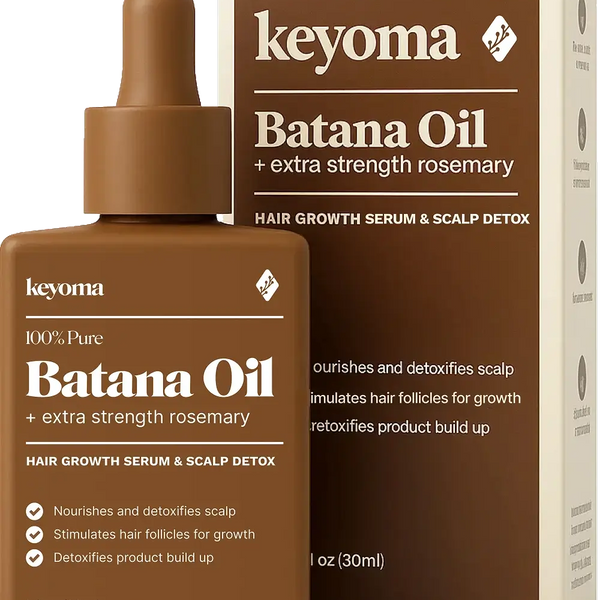In this article
When the topic of bald spots comes up, the first thing everyone usually mentions is minoxidil. And sure, it’s earned its place. But if you ask people who’ve actually tried it, many will tell you how it can make the scalp itch and flake. Not to mention, once you stop using it, the progress often stops too.
So the question becomes inevitable: isn’t there something gentler to turn to first? A natural option, something you can work into your routine without feeling like you’re putting your scalp through a battle?
That’s exactly what this article is about. I'll walk you through the best natural solutions for bald spots, remedies that support regrowth in ways that feel more sustainable, less harsh, and easier to live with day to day.
What Causes Bald Spots?
Bald spots can appear for many reasons, and it helps to think of them in two broad groups.
The first group includes causes that are often reversible through natural methods. These include:
-
Temporary shedding from stress
-
Nutritional deficiencies such as low iron or protein
-
Traction alopecia from tight hairstyles
-
Scalp buildup
-
Excessive chemical treatments, such as frequent bleaching, harsh dyes, or relaxers that weaken follicles over time
The second group involves more serious or medical causes. These include:
-
Androgenetic alopecia (pattern baldness)
-
Alopecia areata (an autoimmune patchy loss)
-
Hair loss linked to chronic conditions like thyroid disease, PCOS, or certain medications
In most cases, this second group requires a doctor’s evaluation and treatment, which may involve prescription drugs, medical procedures, or specialized therapies.
In this article, we’ll focus mainly on the first group—the causes you can address at home with natural plant and animal extracts, healthy habits, and consistent scalp care.
Natural Plant & Animal Extracts for Bald Spots
Rosemary oil
Rosemary oil is distilled from the leaves of the rosemary herb and carries the compounds rosmarinic acid, carnosic acid, and cineol. All three are antioxidants and anti-inflammatory agents that help improve microcirculation around the hair follicles.
With better circulation, follicles in thinning or balding spots receive more oxygen and nutrients, which helps them recover activity and push out new strands where coverage has started to fade.
In fact, a 2015 randomized trial found rosemary oil worked as well as 2% minoxidil for people with androgenetic alopecia, with both groups seeing regrowth after six months.
The difference was that rosemary did it with fewer side effects, showing it can help fill in bald spots in a gentler, safer way.
It’s no wonder this plant has long been valued in traditional medicine and eventually blended into modern hair care, becoming one of the top natural alternatives to chemical hair loss treatments as well.
For safe use, it’s best to dilute a few drops into a carrier oil like coconut or jojoba, since applying it directly can cause irritation. After all, essential oils are highly potent and need that extra step for scalp comfort.
Peppermint oil
Peppermint’s key compound, menthol, gives it the cooling effect and distinctive scent that many think of as simply “refreshing.”
But in reality, menthol has vasodilatory properties. That means when applied to the scalp, it widens blood vessels and stimulates better circulation of oxygen and nutrients, which over time can help fill in bald patches naturally.
Animal research published in Toxicological Research (2014) showed that topical peppermint oil increased dermal thickness, follicle depth, and the number of hair follicles, even outperforming 3% minoxidil in certain measures.
This essential oil definitely deserves a spot on this list—and really, on any list of natural remedies for bald spots.
That said, a word of caution. Peppermint oil is very strong and can cause burning or irritation if applied undiluted. Always mix a few drops into a carrier oil before massaging into the scalp.
Aloe Vera
Aloe vera, with its clear cooling gel, has been used in hair care traditions for as long as we can remember. In the context of treating bald spots, it mainly works by priming the scalp environment to be cleaner and healthier.
This is thanks to its richness in vitamins A, C, and E plus proteolytic enzymes, all of which act as anti-inflammatory agents that clear away dead skin cells and reduce buildup around follicles.
The benefits don't stop there. Aloe gel is also naturally hydrating and helps balance overall scalp health, which can also prevent further thinning.
For use, you can scoop the fresh gel straight from the leaf and apply it directly to your scalp, or mix it into a DIY hair mask. If you’re not the DIY type, you’ll notice aloe popping up in plenty of shampoos and serums as a base ingredient anyway.
One small caution, though: always patch test first. Aloe is generally safe, but for people with sensitive skin, it can occasionally cause contact dermatitis. Better to know before slathering it on.
Here's a fun fact to end on. Ancient Egyptians once called aloe the “plant of immortality.” Of course, it doesn’t grant that to us, but with all these benefits, you can see why the plant has outlived beauty fads and will likely keep its place in routines for thousands of years more.
Bee Venom
Bee venom, also called apitoxin, is a natural secretion from honeybees made up of peptides, enzymes, and amino acids.
Its most notable compound is melittin, which has anti-inflammatory properties and stimulates dermal papilla cells—the very cells responsible for regulating the hair growth cycle.
A study in PubMed (2016) linked bee venom to reduced expression of 5α-reductase, the enzyme that converts testosterone into DHT, a major culprit behind androgenetic alopecia and bald patches. These mechanisms show how bee venom may help fill in thinning areas naturally.
Nowadays, you’ll find bee venom infused in serums or scalp treatments at safe, low, diluted concentrations. Most people use it two to three times a week, but as with any topical, it should always be patch tested first, especially for those allergic to bee stings.
Pumpkin Seed Oil
Pressed from the seeds of the pumpkin fruit, pumpkin seed oil is naturally rich in unsaturated fatty acids, vitamin E (tocopherols), and phytosterols.
One of its standout compounds is delta-7-sterols works much like bee venom in that it can block the activity of 5α-reductase—the enzyme that converts testosterone into dihydrotestosterone (DHT), a key driver of androgenetic alopecia.
This isn’t just theory.
A 2014 double-blind clinical trial found that men with androgenetic alopecia who took pumpkin seed oil supplements saw a 40% increase in hair count after 24 weeks, compared to 10% in the placebo group—solid evidence it can help fill in bald spots naturally.
For scalp use, the oil can be massaged directly, often diluted with a lighter carrier oil for comfortm two to three times weekly. There’s also the option to take it orally in supplement form.
Saw Palmetto
Yet another addition to the list of DHT-blocking, 5α-reductase–inhibiting extracts is saw palmetto, sourced from the berries of the Serenoa repens plant native to the southeastern United States.
It’s rich in fatty acids and phytosterols, compounds that have long been studied for their influence on hormone pathways.
By dialing down the impact of DHT on follicles, saw palmetto helps protect them from miniaturization—the slow shrinking that weakens hairs in balding areas—and gives them a better chance of staying in the growth phase longer.
When it comes to use, you’ll find saw palmetto both in oral supplements and in topical serums. For bald spot care, topical options often make the most sense since they go straight to the scalp where support is needed most.
While generally safe, it may interact with blood thinners or hormone-related medications, so it’s important to consult a healthcare provider before starting.
Hair Care and Lifestyle Habits to Treat Bald Spots
Scalp Massage
Scalp massage helps with bald spots primarily by stimulating blood circulation. Increased blood flow delivers oxygen and nutrients to the hair root, giving dormant or weakened follicles a better chance to restart growth.
If we take a closer look, the mechanical action of massaging stretches the dermal papilla cells. In response, these cells release natural signaling proteins (growth factors) that tell follicles to stay in—or even re-enter—the growth phase.
And if it’s not obvious yet, this method is absolutely free. No products required. Of course, you can pair it with a nourishing oil if you want extra benefits. All it takes is gentle circular motions for at least five minutes per day, using your fingertips (never your nails) to avoid scratching.
Finally, pay extra attention to the crown and hairline if bald spots are beginning to form there.
Wear Sun Protection
One thing I find often overlooked in hair loss discussions is sun protection. It won’t regrow hair on its own, but it matters because thinning or exposed areas of the scalp are especially vulnerable to UV radiation. Hats and other coverings can go a long way in protecting these spots from further damage.
Mechanistically, UV rays ramp up oxidative stress, which leads to inflammation and even DNA damage in follicle cells. That makes it harder for new hairs to break through in bald patches.
For practical protection, wearing a hat or scarf is the simplest option, especially if you’re outdoors for long periods. Scalp-specific sunscreens are also available. Just be sure to choose non-comedogenic or lightweight formulas so you don’t clog pores.
Eat Foods Rich in Protein & Iron
Eating a nutrient-rich diet, especially one high in protein and iron, directly supports bald spots because it gives follicles the raw materials and oxygen they need to restart and sustain growth in thinning areas.
On one hand, hair itself is made of keratin, a structural protein, and follicles can’t produce strong new strands without enough of it.
On the other hand, iron supports oxygen transport through hemoglobin, making sure follicles in balding areas get the energy they need for regrowth.
Low protein or iron levels are well known to contribute to telogen effluvium, a temporary form of hair loss where more strands than usual shift into the shedding phase, leading to diffuse thinning or patchy loss.
I’ve talked in detail about the best foods for hair growth before, but just to quickly echo: lean meats, fish, eggs, beans, nuts, and leafy greens like spinach are excellent choices.
And a final tip, definitely pair iron-rich foods with vitamin C sources (like citrus or bell peppers) to improve absorption.
Sleep and Rest Well
Think back to the last time you pulled late nights, whether for work, cramming projects, or binge-watching a series. If you’re someone who pays attention to your hair, you might have noticed more shedding in the shower or strands looking a little thinner than usual.
Poor sleep doesn’t just leave you tired, it can also set the stage for balding. That’s because a lack of quality rest raises cortisol levels, which can push follicles into the shedding phase and make thinning patches worse.
Of course, one bad night won't suddenly cause bald spots. But chronic sleep debt, stretched over weeks or months, raises the risk and makes existing thinning more visible.
On the other hand, consistent, quality deep sleep does the opposite. It regulates hormone balance and improves blood flow—two things your follicles rely on to stay healthy and active.
Tips to support a good sleep habit include:
-
Aim for 7–9 hours of sleep each night.
-
Keep a consistent bedtime and wake-up schedule.
-
Limit screen exposure before bed to encourage melatonin production.
-
Try relaxation techniques such as breathing exercises or light stretching.
Avoid Braids and Other Tight Hairstyles
You might not think of it that much, but your braids, ponytails, or buns could be behind those bald spots—through a condition called traction alopecia.
The constant pulling inflames the follicle and can eventually cause scarring, which limits its ability to regrow hair. And once scarring sets in, regrowth can become irreversible.
All that said, remember these simple adjustments:
-
Wear looser styles that don’t tug on the scalp, like loose braids, low ponytails, or messy buns.
-
Alternate hairstyles so the same area isn’t under repeated strain. For example, don’t always part your hair in the same spot or tie it in the exact same ponytail every day.
-
Give your scalp breaks between tight styles to let follicles recover.
Start Small, Start Natural
The natural solutions for bald spots we’ve talked about aren’t magic potions, and they’re definitely not a switch you can flip overnight. But give them time, give them love, and before you know it, you’ll run your fingers over your crown and be surprised at the thickness returning.
The best way to make it stick, at least from my experience, is to start with just one thing. For me, that’s rosemary infused in batana oil. Over the years, it’s helped me keep my thinning hair healthier and my hairline looking softer, fuller, and more natural.
So if you’re stressing over a thinning hairline or tiny bald spots, this might be the place to start too. Try it today, make it part of your own ritual, and one day you’ll catch yourself smiling when those baby hairs finally show up in the mirror.
Featured Product
100% Pure Batana Oil + Rosemary
↓Best Batana Oil to Buy↓
1 Month
Subscribe & Save
- 30-day supply delivered monthly $35
- 30% off for life $6
- Free haircare essentials kit $33
- Free custom wooden comb $10
- Free scalp massager $15
- Free eco-friendly travel bag $8
- 30-Day Money Back Guarantee
- Free Shipping
- Online portal for easy cancel, skip, or pause.
1 Month One Time Purchase
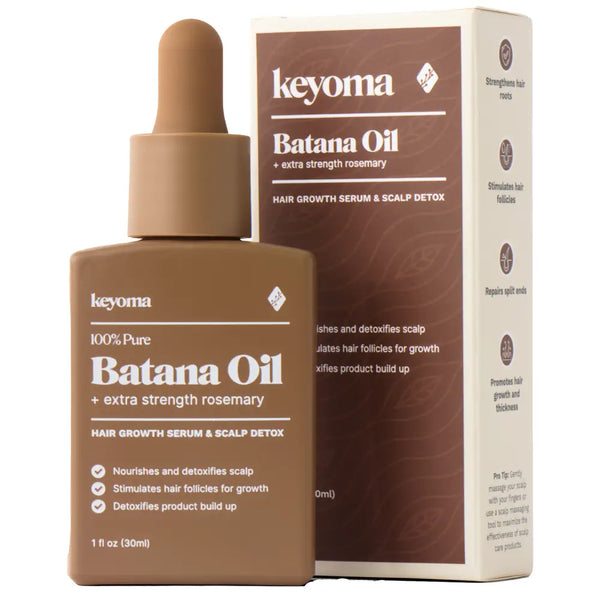
- 30-day supply $50
- 30% off for life $6
- Free haircare essentials kit $33
- Free custom wooden comb $10
- Free scalp massager $15
- Free eco-friendly travel bag $8
Your Cart
Your Cart is empty
Let's fix that
You might like...
Search our store
